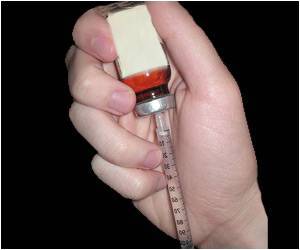Ruxolitinib improves survival and quality of life in patients with a life-threatening bone cancer called myelofibrosis, shows study published in NEJM.

Patients who received ruxolitinib also experienced relief from the disease's debilitating symptoms, which include fatigue, weight loss, abdominal pain, severe itching, night sweats and bone pain. They were much more likely to have the drug shrink their swollen spleens, a hallmark of the disease tied to many of the symptoms.
Myelofibrosis is caused by the accumulation of malignant bone marrow cells that triggers an inflammatory response, scarring the bone marrow and limiting its ability to produce blood, resulting in anemia. About 3,000 new cases of myelofibrosis are diagnosed in the United States each year, Verstovsek said. Average survival ranges from two to 11 years, depending on a variety of prognostic factors.
Last November, the U.S. Food and Drug Administration approved ruxolitinib, produced by Incyte Corporation and known commercially as Jakafi®, for people with intermediate or high-risk myelofibrosis based in part on the results of this trial. It was the first drug approved for myelofibrosis, which has been treated with supportive care such as blood transfusions and other therapies with limited benefits.
Mortality falls by nearly half in treated group
The clinical trial enrolled 309 patients at 89 centers in the United States, randomizing 155 to ruxolitinib and 154 to placebo.
Advertisement
Spleens shrink
"The enlarged spleen, known as splenomegaly, does more than cause patients pain and make it hard for them to bend over or walk," Verstovsek said. "By pressuring the stomach and bowels, the spleen suppresses appetite, leading to severe weight loss."
End-stage myelofibrosis patients resemble starving people, with swollen abdomens and emaciated limbs.
- In the treated group, 41.9 percent of patients experienced at least 35 percent shrinkage in their spleen volume and it stayed smaller in 67 percent of those responders for 48 weeks or longer.
- Only .7 percent of those in the placebo group had their spleens shrink by 35 percent in volume.
- At week 24, the ruxolitinib group had an average reduction in spleen volume of 31.6 percent, while the placebo group experienced an average increase in spleen volume of 8.1 percent.
Symptoms improve
Every night, patients completed the Myelofibrosis Symptom Assessment Form, an electronic diary. They evaluated the intensity of night sweats, itching, abdominal discomfort, pain under the ribs on the left side, a feeling of fullness, muscle and bone pain, and inactivity.
In the treated group, 45.9 percent of patients reported a reduction of 50 percent or more in their total symptom score over 24 weeks, compared to 5.3 percent in the placebo group. Treated patients gained weight, placebo patients lost weight.
Improvements were usually noted within the first four weeks of treatment and were not limited to patients who also had their spleens shrink, Verstovsek said.
Bone marrow scarring not reversed
In both arms of the trial, 11 percent of patients had to withdraw from the study due to adverse events. Anemia and low platelet counts were more common among patients who received ruxolitinib, but only one patient had to discontinue the drug for each reason.
Ruxolitinib is an inhibitor of Janus Kinase enzymes (JAK1 and JAK2) inside the bone marrow cells that are important for the pathobiology of the myelofibrosis. As in the phase I/II trial, patients responded to the drug whether or not they have a common JAK2 mutation found in 50 percent of patients.
"Ruxolitinib is inhibiting overactive JAK/STAT intracellular signaling pathway no matter what," said Verstovsek, who also led the phase I/II trial.
Even with the clinical benefits of treatment, the drug doesn't reverse the damage done to bone marrow. "It doesn't get worse or better," Verstovsek said. More progress will require additional drugs and combination therapies, some of which are in clinical trial now.
Verstovsek's practice focuses on myeloproliferative diseases. He sees 200-250 new patients annually and also heads the Clinical Research Center for Myeloproliferative Neoplasia, a new center formed in the Leukemia Department last year funded by philanthropy. MD Anderson typically has 10 or more open clinical trials for drugs to treat myeloproliferative diseases from a variety of companies.
Source-Eurekalert











